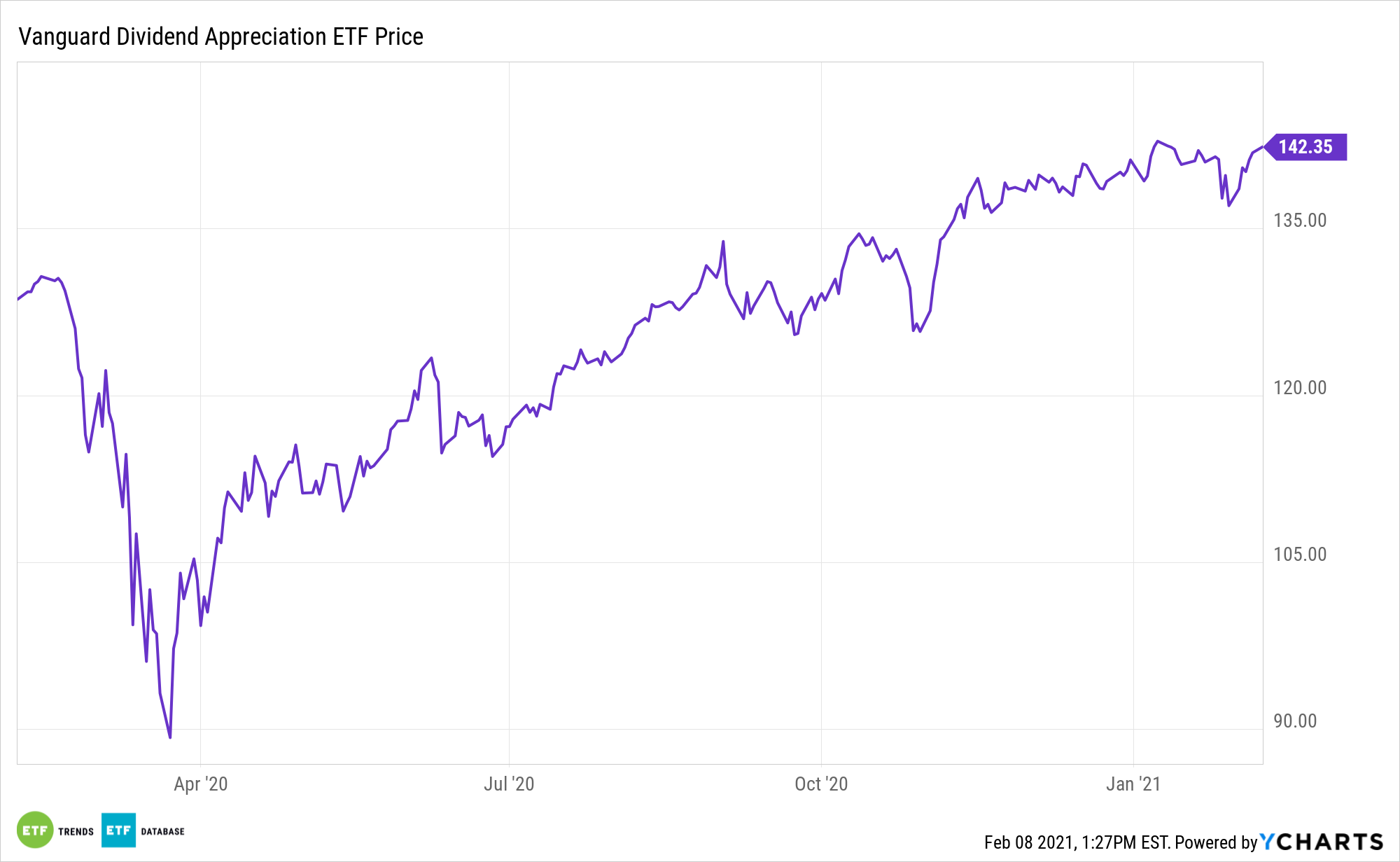Dividend-paying stocks are coming back into style after some turbulence last year, meaning cost-conscious investors may want to revisit a familiar friend in the Vanguard Dividend Appreciation Index Fund ETF Shares (NYSEArca: VIG).
VIG seeks to track the performance of a benchmark index that measures the investment return of common stocks of companies that have a record of increasing dividends over time. The fund employs an indexing investment approach designed to track the performance of the Nasdaq US Dividend Achievers Select Index, which consists of common stocks of companies that have a record of increasing dividends over time.
The requirement for entry into VIG’s underlying index is for companies to meet a minimum dividend increase streak of 10 years.

Why ‘VIG’ Can Shine in 2021
As income-minded investors look for ways to bolster returns in a low-rate environment, various exchange traded funds can rise to the challenge.
Exposure to the value factor could be in play following rotation away from high growth, which has outperformed this year, to cheaper cyclical sectors. Value stocks tend to trade at a lower price relative to their fundamentals (including dividends, earnings, and sales).
Dividends are in demand as fixed-income investors face a lower-for-longer interest rate environment. The Federal Reserve is expected to maintain its near-zero interest rate policy to help push inflation up, bolster the economy, and lower the unemployment rate. The Fed has already stated it is willing to let inflation run higher to offset years inflation fell below its 2% target. Historically, dividend growers, including those found in VIG, are strong inflation fighters.
Dividend-paying stocks can also help insulate investors from a broad market pullback. That’s particularly true of VIG components, which by virtue of their quality traits, tend to display less volatility in rough markets.
VIG “focuses on dividend growth rather than dividend yield,” said Morningstar in a recent note. “This approach reduces the fund’s exposure to firms with weak fundamentals that may not be able to sustain their dividend payments, which is a risk that often accompanies a narrow focus on yield. The fund builds its portfolio by selecting only among stocks that have increased their dividend payment for at least 10 consecutive years. This stringent hurdle restricts the fund to holding highly profitable firms with shareholder-friendly management teams that have consistently raised dividend payments.”
For more on innovative portfolio ideas, visit our Nasdaq Portfolio Solutions Channel.
The opinions and forecasts expressed herein are solely those of Tom Lydon, and may not actually come to pass. Information on this site should not be used or construed as an offer to sell, a solicitation of an offer to buy, or a recommendation for any product.

